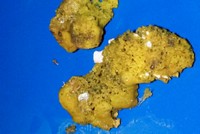Advertisement
Grab your lab coat. Let's get started
Welcome!
Welcome!
Create an account below to get 6 C&EN articles per month, receive newsletters and more - all free.
It seems this is your first time logging in online. Please enter the following information to continue.
As an ACS member you automatically get access to this site. All we need is few more details to create your reading experience.
Not you? Sign in with a different account.
Not you? Sign in with a different account.
ERROR 1
ERROR 1
ERROR 2
ERROR 2
ERROR 2
ERROR 2
ERROR 2
Password and Confirm password must match.
If you have an ACS member number, please enter it here so we can link this account to your membership. (optional)
ERROR 2
ACS values your privacy. By submitting your information, you are gaining access to C&EN and subscribing to our weekly newsletter. We use the information you provide to make your reading experience better, and we will never sell your data to third party members.
Synthesis
Copying Nature’s Assembly Line
Organic Synthesis: Successive homologation reactions let chemists tailor carbon chain’s conformation
by Bethany Halford
September 15, 2014
| A version of this story appeared in
Volume 92, Issue 37

Organic chemists have long admired nature for its ability to perform chemistry in an assembly-line style, wherein the same reaction or sets of reactions are carried out repeatedly to create a target molecule. Polyketide natural products, for example, are biosynthesized via such an assembly-line process.
Now, chemists at England’s University of Bristol report an assembly-line reaction that can be done in a flask (Nature 2014, DOI: 10.1038/nature13711).
Using a boronic ester and an organolithium compound, a team led by Varinder K. Aggarwal, Craig P. Butts, and Jeremy N. Harvey can create carbon chains up to 10 atoms long via repeated homologation of a carbon-boron bond. Each carbon in the chain bears a methyl group, and because the chemists can control the stereochemistry of these methyl groups, they can also control the shape the chain ultimately takes. For example, when the stereochemistry of the methyl groups alternates, the chain curls into a helix.
Nature, Aggarwal points out, often uses methyl groups to determine a molecule’s conformation. But nature can only put methyl groups on every other carbon in a chain. This new chemistry can put methyl groups on every carbon, adding even more control over the shape a molecule takes.
“If we already know what shapes we want, we can make them using the chemistry that we’ve developed,” Aggarwal explains. “You could make L-shaped molecules, U-shaped molecules, V-shaped molecules, any sort of molecules that you wish. This could be very useful for all sorts of applications, such as materials chemistry.”
“One of the contemporary challenges in synthetic organic chemistry is the ability to control configurational stereochemistry and molecular conformation,” notes David O’Hagan, a chemistry professor at the University of St. Andrews, in Scotland, who studies conformational effects. “The elegance here is to show how one follows the other.” He notes that the isomeric structures created by the Bristol chemists have distinctly different conformations. “The ability to adjust the stereochemistry to order by programming the method at each stage is impressive and powerful,” he says. “The next stage now must be to relate stereochemistry to function.”





Join the conversation
Contact the reporter
Submit a Letter to the Editor for publication
Engage with us on Twitter